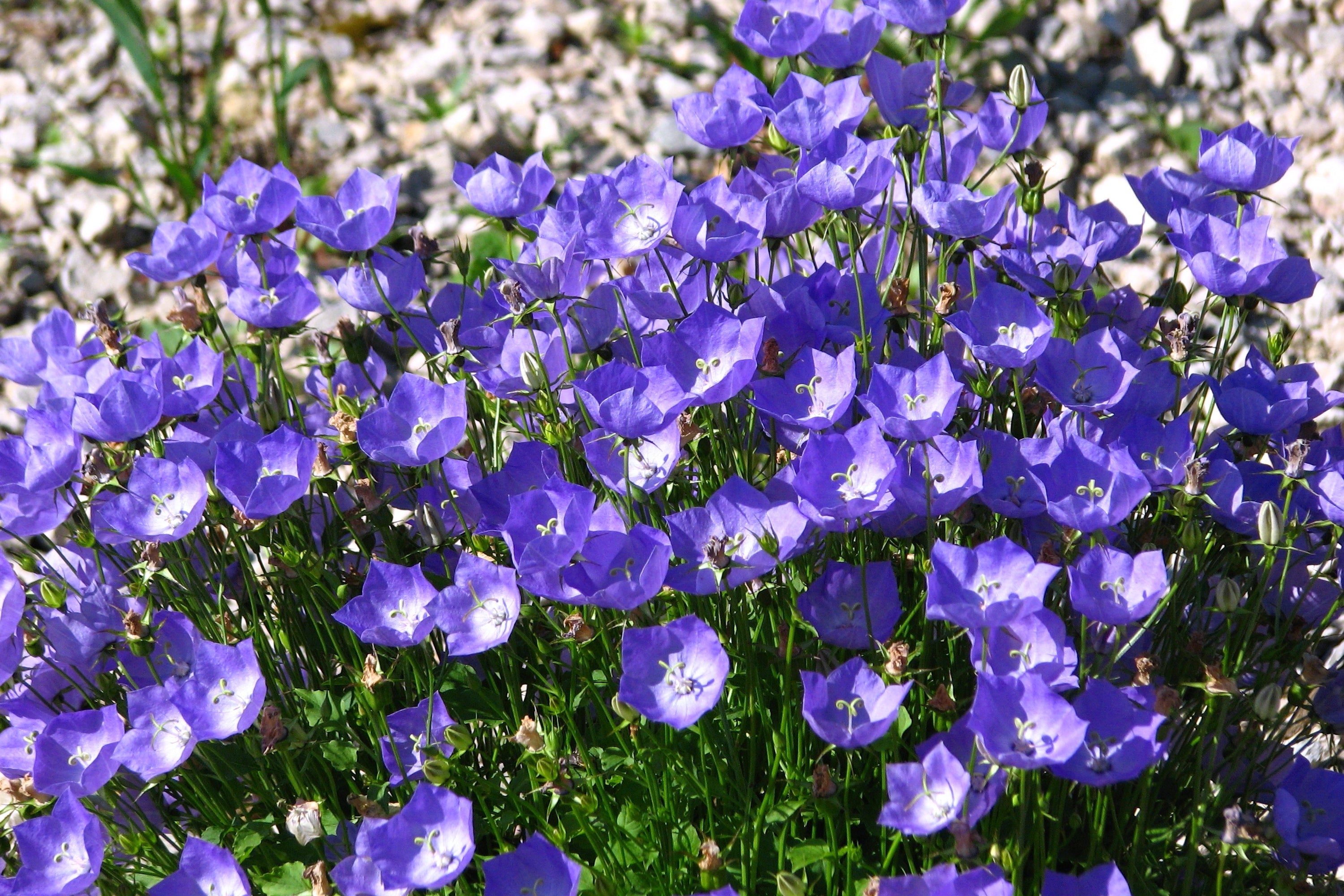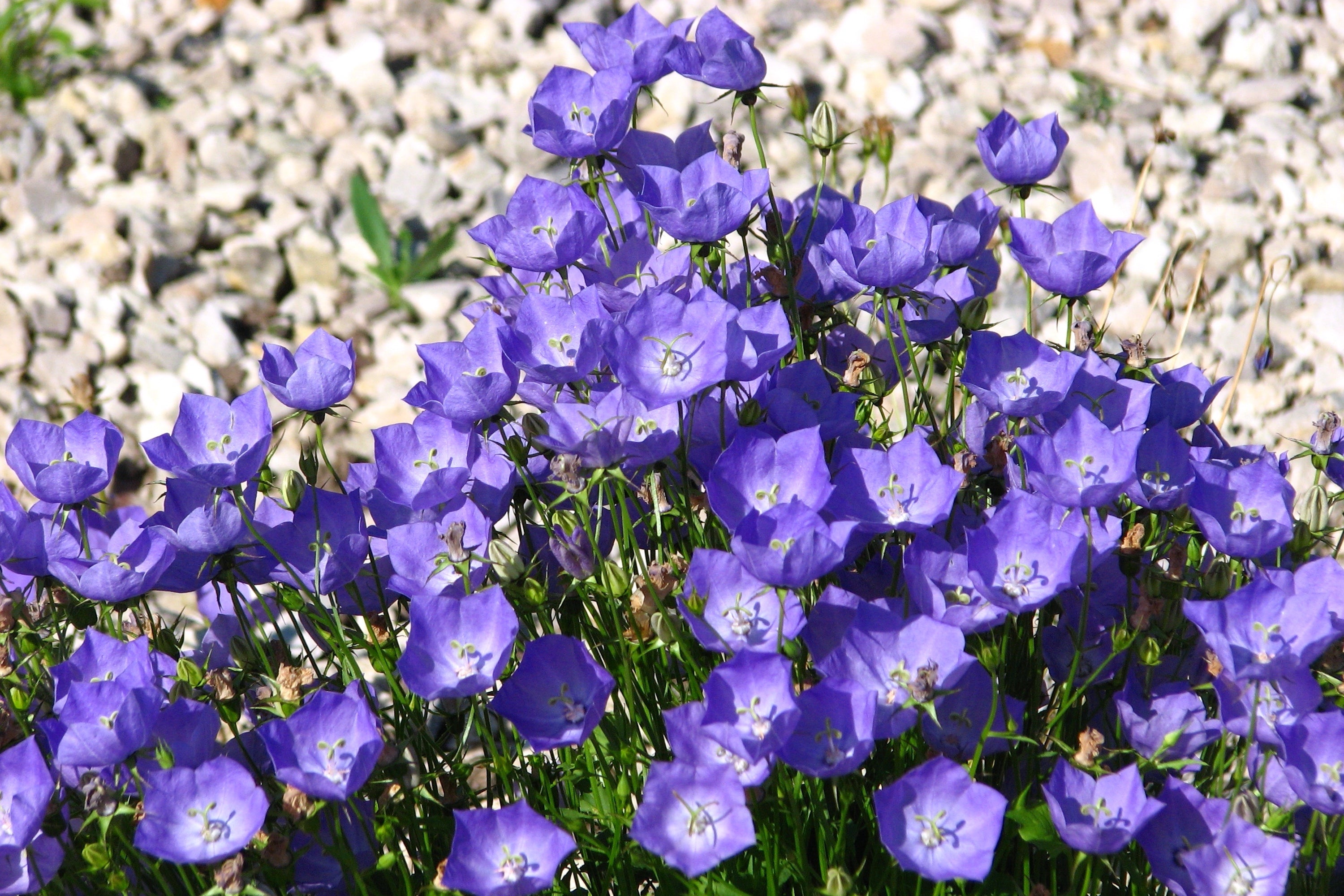Campanula carpatica
Approx. 0.5 litre pot
About this cultivar:
Campanula carpatica is also known as the tussock bellflower or Carpathian harebell. Native to the Carpathian Mountains of Central Europe, hence the latin eptihet. It is a low-growing herbaceous perennial, with long stems bearing solitary bell-shaped flowers. This selection is perfect for pots or the front of the border, over the edge over a raised bed or rock garden. Useful for gaps! Masses of flowers for a long time and the seed heads look great later in the season. Has the Royal Horticultural Society Award of Garden Merit (RHS AGM).
It was first introduced to the Royal Botanic Garden at Kew in 1774 by the Dutch Professor Nikolaus Joseph von Jacquin (1727 - 1817). Mozart dedicated a considerable number of his works to the Jacquin family, notably the Kegelstatt Trio. This was first played at the Jacquins' house in August 1786.
Obviously a talent spotter - be it plants or composers!
- Position: Full sun, partial shade
- Soil: Almost any soil, grows well in Ballyrobert
- Flowers: June, July, August, September
-
Other features: Royal Horticultural Society Award of Garden Merit (RHS AGM),
Great Ground Cover, Grows well in Ballyrobert - Hardiness: H5 - Hardy in most places throughout the UK even in severe winters (-15 to -10°C), Fully hardy - grows well in Ballyrobert!
- Habit: Bushy, Clump forming
- Foliage: Deciduous
- Height: 15 - 30 cm (0.5 - 1 ft)
- Spread: 30 - 60 cm (1 - 2 ft)
- Time to full growth: 2 to 5 years
- Plant type: Herbaceous Perennial
- Colour: Blue, purple, green
-
Goes well with: Hosta, Geranium, Lupin, Inula, and Phlox.
About this genus:
Campanula is a wide-ranging genus (over 500 species!) of plants that contains everything from rare, difficult-to-grow wimps to vicious invasive thugs. Over the years, we have killed (with love or violence) several Campanula cultivars and discarded others, but along the way we found some gems that do great in our own garden: no weaklings and no violent spreaders. We offer them, all perennials, here.
Campanula are late spring and summer flowering perennials that prefer partial sun - but many will tolerate deep-shade and full-ish sun. They grow well in a variety of soils - almost anywhere that isn't too extreme. Campanula usually produce bell-shaped flowers that attract all sorts of wildlife. This feature is so emblematic, that plant taxonomists have even coined the word "campanulate" to mean any bell-shaped flower (note also that Campanula is Latin for "little bell"). However some species of Campanula have 'split-open-type' bell flowers which may start life looking bell-like but soon don't look like bells at all (unless you folded them and glued them together in some origami style).
When deciding plant combinations for the genus it is difficult because the cultivars vary so much! From ground cover to 6 feet tall! So in this section I don't think I'll bother and maybe try to be specific to the cultivar on offer. Having said that, Campanula are the one of the most versatile plants in the garden which might explain their ubquity..










